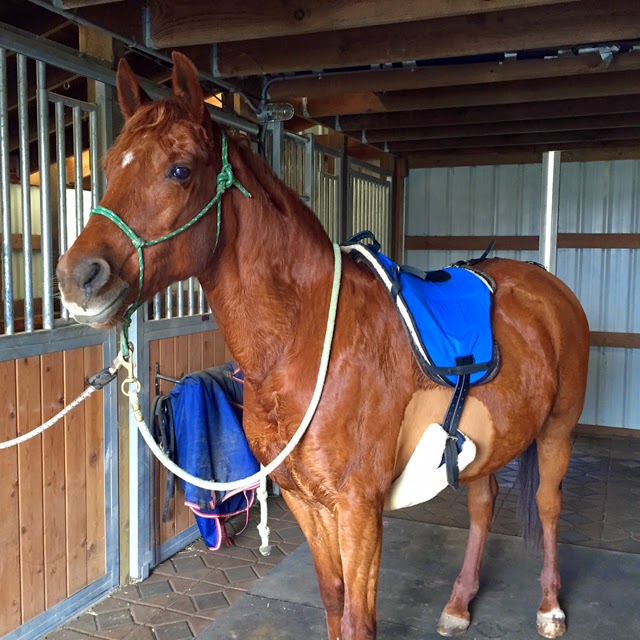Here are my notes – with my own comments peppered within – from the enjoyable panel at the PNER Conference 2015 put on by Dr. Erica McKenzie BSc, BVMS, PhD., DACVIM, DACVSMR. Yes, that’s a lot of degrees.
This is the kind of stuff I nerd out on regularly anyway, building on my equine science background. I highly recommend my fellow nerds and wannabee nerds dip into the nitty-gritty of horse physiology and nutrition. It prepares our equestrian athletes for whatever we ask them to do, and makes us better horse people.
The long and short of it: horses are better athletes than humans. They
have massive lung fuel, which increases the maximum rate of their oxygen use.
They have a large heart comparable to body size and have a higher amount of
blood hemoglobin (for carrying oxygen to tissues). They have something called a
“contractual spleen”, which essentially allows them to squeeze blood out of
their spleens and increase their blood volume during exercise. Wild, right?
Horses are also efficient at heat loss through sweating. They sweat a lot, and the ability to shed heat can be a limiting factor for some horses.
 |
| A recently sweaty Deli, still in her winter woolies. |
A horse’s physiology, including their “fragile” stick-legs among other
things (their shoulder contraption is a beautiful work of evolutionary
engineering), give them a very energy efficient gait. (Especially when compared
to me, because my conformation isn’t great.)
However, when it comes to exercise physiology the source of fuel is central to everything else!
Horses have slow digestion compared to other animals. Endurance racing
requires a ton of fuel. Dr. McKenzie enlightened us as to one point: a horse
can’t have enough fuel for an endurance race just based on recent food intake.
They will need to run on stored fuel to be successful.
Muscle, which can be 55% of an athletic horse’s body weight, is the
primary storage of glycogen. When glycogen is burned for fuel, waste products
like lactate build up and cause muscle fatigue. Glycogen is primarily used in the absence of
oxygen in the muscles – anaerobic situations. Endurance is largely an aerobic
sport, where the horse is (ideally) able to intake enough oxygen to not swap to
burning primarily glycogen. Instead, these horses will burn fat to fuel their
activity (and horses are built for this, so it’s groovy). This is the reason
endurance horses are usually fed high-fat low-sugar diets!
One point I found particularly notable in this panel is that to use fat
as fuel, a little glycogen still needs to be burned to keep the fat burning
process working! So yes, sugars have their uses for an endurance athlete even
if fat should be their primary fuel source (to prevent muscle fatigue). It
takes horses a long time to replace lost glycogen in the muscles. If you want
to read further on this subject, this
article on muscle-glycogen replacement in horses was fascinating (and
references the more detailed scientific article).
I’m sure you can see how respiration relates directly to where the
horse is getting their fuel and a horse’s ability to take in air can be a limiting
factor. However, lung volume (unlike heart rate) is non-responsive to training
– as in, a horse’s lungs have a cap on how much oxygen they can breathe in.
It’s still a HUGE volume of air!
An equine athlete’s fitness level is also is key in how a they burn
what fuel they have. The more fit our partners are, the more slowly they go
anaerobic and start using up their glycogen stores. Blood volume also increases
when you get fit so that you can afford water loss from sweat. And a decrease
in the resting heart rate in a fit equine indicates a larger heart that more
efficiently pumps blood. Interestingly, max heart rate is not variable and
actually decreases as an equine ages.
So what are the practical applications for this information?
First, horses have higher thermal demands than humans – they lose a lot
more electrolytes in sweat and their thirst response is not good. Dr. McKenzie
recommends you offer water to your partner right when they stop because there
may be a small window within which they feel thirsty. This is also why supplementing
electrolytes is so common in endurance races.
Second, training and conditioning plays a huge part in improvement.
When exercise starts they are always anaerobic to get the whole process started
– which is where an easy warmup comes into play. The more fit a horse is the
more slowly they use up muscle glycogen stores.
Third, to avoid bonk/fatigue, avoid using up the fuel stored in your
partner’s muscle! It’s also a good diet to give them some time to replenish
their fuel stores before asking them for another “race” effort.
Last time: what do you pack in your vet bag?
Next time: Deli’s big rehabilitation update – and saddle fit issues.
Next time: Deli’s big rehabilitation update – and saddle fit issues.
Good sumation. Question for you: do you have notes from the Garmin 310xt class? I wanted to attend that but missed it. Would love to know what was covered.
ReplyDeleteI did attend part of the garmin talk, but left early and didn't take notes, sorry. (I don't have a gps, so it wasn't something I was as interested in. Yet.)
Delete